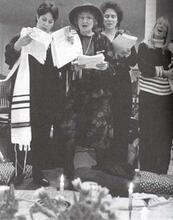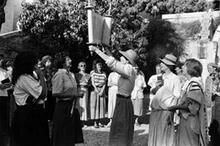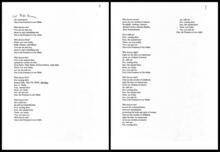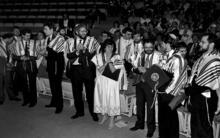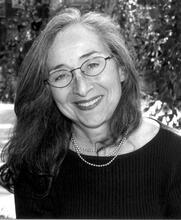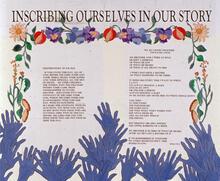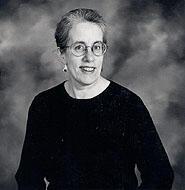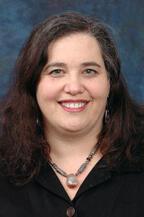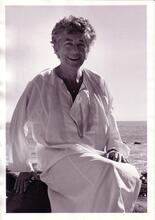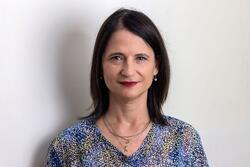Women's Tefillah Movement
The Women’s Tefillah Movement grew out of Orthodox Jewish women’s need for more meaningful and participatory roles in prayer services that remain within the boundaries of Jewish law and practice. Various religious, sociological, educational, and political factors shaped the creation of Women’s Tefillah groups in New York, around the United States, and in Israel. While Women’s Tefillah groups were initially the only space where women could expand their participation in Orthodox tefillah, the rise of Partnership Minyanim has given Orthodox women and girls more options to explore their Jewish spirituality more fully. The groups, however, still fulfill an important role, especially for young girls when celebrating their Bat Mitzvah.
Orthodox women’s Prayertefillah (prayer) groups consist of women who wish to maximize women’s participation in communal prayer while remaining within the The legal corpus of Jewish laws and observances as prescribed in the Torah and interpreted by rabbinic authorities, beginning with those of the Mishnah and Talmud.halakhic parameters of the Orthodox community, not activating the legal requirements of a quorum (minyan) of ten adult men. These groups meet regularly to conduct prayer services for women and girls only.
The Emergence of Women’s Tefillah Groups
The first women’s tefillah group began in the late 1960s on the holiday of Lit. "rejoicing of the Torah." Holiday held on the final day of Sukkot to celebrate the completing (and recommencing) of the annual cycle of the reading of the Torah (Pentateuch), which is divided into portions one of which is read every Sabbath throughout the year.Simhat Torah at Lincoln Square Synagogue in Manhattan. Simhat Torah had been a particularly frustrating experience for Orthodox women, as all of its customs and celebrations are tied to the synagogue and formal prayer. Perhaps even more critical was the fact that celebration focused on carrying, dancing, and rejoicing with the Torah she-bi-khetav: Lit. "the written Torah." The Bible; the Pentateuch; Tanakh (the Pentateuch, Prophets and Hagiographia)Torah scrolls, a practice from which women were excluded. With the support of its rabbi, Shlomo Riskin, the women of Lincoln Square Synagogue were given Torah scrolls for the celebration and permitted to convene a separate Torah reading, with women leading the reading. Subsequently, it was seen as a major step forward when women in other Orthodox synagogues were also granted the privilege of holding the Torah and taking it to the women’s section. Many groups progressed to conducting full-fledged Simhat Torah services for women only—services in which women read the Torah portion aloud and gave Lit. "ascent." A "calling up" to the Torah during its reading in the synagogue.aliyot to every woman present.
By the late 1970s, a number of groups began to meet monthly. Some of these prayer services were tied to rosh hodesh (the beginning of the month) and the new moon cycle and met on weekdays, while others met once a month on SabbathShabbat. In 1978 and 1979, tefillah groups were formed in Baltimore, Maryland; in St. Paul, Minnesota; and in Riverdale and Washington Heights, New York. In the early 1980s, the first women’s tefillah group in Canada was founded, followed shortly by the Flatbush group in Brooklyn, New York.
Opposition and Support
During this period, most women’s tefillah groups met in private homes, as Orthodox synagogues were not prepared to sanction the practice. Two notable exceptions in New York were the Riverdale group, which was invited by Rabbi Avi Weiss to meet in the Hebrew Institute of Riverdale, a major Orthodox synagogue, and an East Side group that met in Kehillat Jeshurun under the guidance of Rabbi Haskel Lookstein. Mainstream modern Orthodox rabbis and community leaders rejected women’s tefillah groups for reasons that ranged from the halakhic to the sociological. This issue came to a head in 1985 with publication of the “teshuva: responsum” by five highly regarded Yeshiva University rabbis. The position paper viewed the movement as stemming from, and copying, the feminist movement in America, with no serious spiritual or religious basis. It prohibited all organized women’s prayer groups in any form.
The reaction to this public statement was dramatic. Although some rabbis used the statement to justify their prohibition of these prayer groups, a number of well-respected Orthodox rabbinic leaders viewed the document as completely subjective and without serious halakhic basis. This spurred them to take more public roles and action in support of the growing movement.
In response to the 1985 Yeshiva University teshuva responsum, the brothers Rabbi Aryeh Frimer and Rabbi Dov Frimer published an extensive article entitled “Women’s Prayer Services: Theory and Practice” in the Winter 1998 issue of the Orthodox journal Tradition Magazine. The Frimers painstakingly reviewed all the possible halakhic, legal, and sociological issues regarding women’s prayer groups. They found that such groups, as long as their structure did not include those specific elements necessary for a minyan, there should be no objection to them, halakhic or otherwise. Many tefillah groups, including the Skokie Women’s Tefillah Group in Skokie, IL, had already been consulting with Rabbi Aryeh Frimer as their specific halakhic advisor regarding the nature of their prayer and of their Torah reading and learning service. In 2001, Rabbi Weiss published Women and Prayer, which also analyzed and supported women’s tefillah from a halakhic perspective.
Women’s Tefillah Network
Also as a response to the 1985 responsum, the Women’s Tefillah Network (WTN) was born in the 1990s. Through 2000, the network served as a support and resource center for new and existing groups, published regular newsletters, counseled groups, and provided groups with written and taped prayer guides. By the late 1980s, women’s tefillah groups had proliferated throughout New York and spread to isolated venues throughout North America. It was difficult to ascertain the exact number of groups. Since the climate was so hostile, many existed “underground.” By 1988, however, it was estimated that there were twenty groups, and in January of 1997 there were over forty identifiable groups in the United States, Canada, Israel, England, and Australia, representing nearly four thousand women. As of 2000 there were thirty-three women’s tefillah groups in the United States (twenty-two of which were in New York), as well as fifty-seven other groups worldwide, including three in Canada, seven in Israel, two in England, and one in Sydney, Australia.
With the formation of the Jewish Orthodox Feminist Alliance (JOFA) in 2000, many of the WTN’s services and roles were taken over by the newer, larger organization, and the network itself became less necessary and hence less active. In 2015, JOFA conducted a comprehensive study of established tefillah groups around the world, comparing their practices, especially regarding Torah reading, the frequency of meetings, and where they met. One of the report’s most interesting findings was that many of the groups had shed their previous underground status and either met independently in Orthodox synagogues or were incorporated into the synagogue structure.
The advent of Orthodox minyanim that permit a greater participation for women (based on the widely circulated article by Rabbi Mendel Shapiro, originally published in The Edah Journal, 2001) had a significant impact on the direction of women’s tefillah groups. These Partnership Minyanim, as they have come to be known, allow for women to lead certain parts of the service, chant the Torah, and receive aliyot. Women and men still sit separately and the prayer structure itself follows traditional Orthodox liturgy. Initially, the formation of these minyanim resulted in a loss of membership for women’s tefillah groups, with many seeing women-only tefillah groups as outdated, even quaint. These losses have lessened over time, with many women returning periodically to tefillah groups, especially for Lit. "daughter of the commandment." A girl who has reached legal-religious maturity and is now obligated to fulfill the commandmentsbat mitzvah celebrations for their daughters, as these services afford the greatest degree of meaningful participation.
As this evolution continues, there has been a greater realization that women-only prayer and learning spaces are sometimes necessary and that egalitarian spaces very often still limit participation and full experience for female participants. Despite greater options for women’s participation in Orthodoxy not only in prayer spaces but in the Houses of study (of Torah)bet midrash and the study hall, and the advent of female Orthodox clergy with the establishment of Yeshivat Maharat, women’s tefillah groups are still an important aspect of Orthodox women’s access to spirituality within the halakhic framework.
Structure of Women’s Tefillah Groups
Women’s prayer groups meet monthly to pray, read Torah, and study together. Most groups meet on Shabbat mornings, while others meet on Shabbat afternoons for the minchah service or on rosh hodesh (New Month celebrations) that fall on weekdays. Generally, full Torah and haftarah portions are read. The women conduct a full service based on guidelines set by their halakhic advisors or local rabbis. For the most part, women’s tefillah groups do not function as a minyan. Certain parts of liturgy categorized as Devarim Bikdushah, those parts that have to do with God’s holiness, are omitted, including the Kedusha prayer in the repetition of the Amidah and recitation of the mourner’s Kaddish.
Women’s tefillah groups also serve as an arena for women’s life cycle events within the Orthodox community. Celebrations held include simhat bat ceremonies celebrating the birth of a baby girl, bat mitzvah ceremonies, and “afrufs” (lit. “calling up,” an honorary aliyah on the Shabbat before one’s wedding) for women about to be married. Among the unique practices that have resulted from these groups is the inclusion of a prayer for Woman who cannot remarry, either because her husband cannot or will not give her a divorce (get) or because, in his absence, it is unknown whether he is still alive.agunot, women denied religious divorce.
The tefillah groups are attended by women of every age and religious background. Young mothers with babies, older women, preadolescents, teenagers, and college students all participate. This forum allows each woman unique entry into the world of prayer. For some women it affords the opportunity to learn and practice new synagogue skills; for some it provides an opportunity to serve as role models for their children; for some it is a doorway back to the Orthodox community; for some it is a natural extension of leadership they experience in other areas of their lives; for many it is natural complement and enhancement to their halakhic observance.
As feminism continues to influence American Orthodoxy, women’s tefillah groups will remain a viable alternative for Orthodox women who desire a fuller worship experience without leaving Orthodoxy.
Frimer, Aryeh A., and Dov I. Frimer. “Women’s Prayer Services: Theory and Practice, Part I, Theory.” Tradition Magazine, vol. 32, no. 2 (1998).
Frimer, Aryeh A., and Dov I. Frimer. “Special Supplement: Women, Keri’at ha-Torah, and Aliyyot.” Tradition Magazine, vol. 46, no. 4 (Winter 2013).
Shapiro, Mendel. “Queri’at ha-Torah by Women: A Halakhic Analysis.” The Edah Journal, vol. 1, no. 2 (2001): 2-52.


